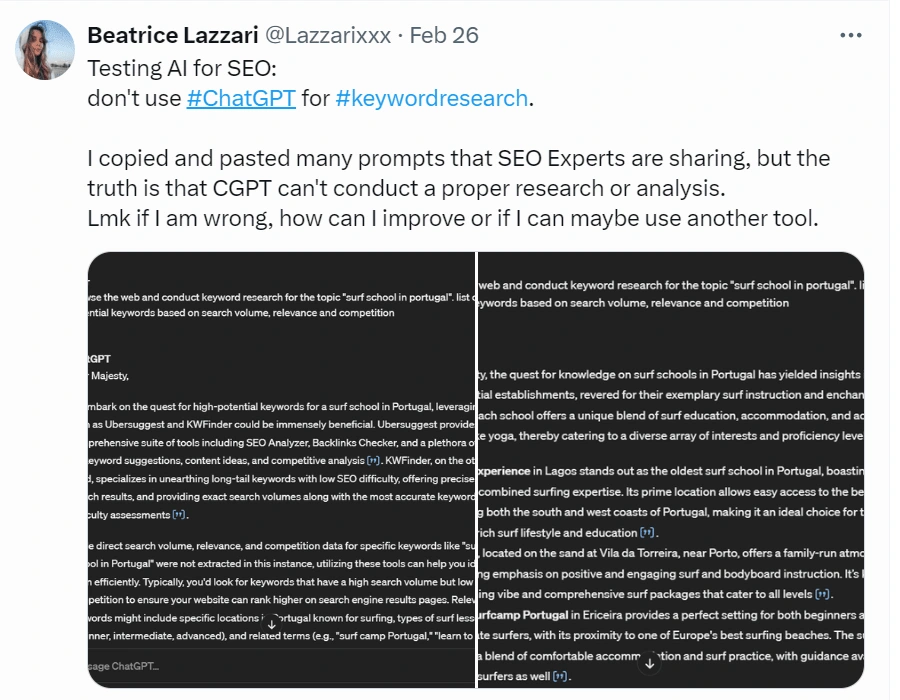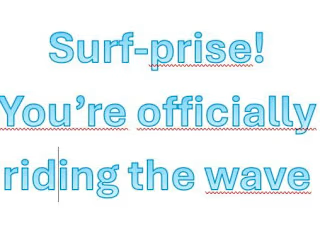AI & Writing/Storytelling: published posts and articles
Here are some of the articles and blog posts that I shared on social media when I started becoming interested in and studying AI.
AI untapped potential blew my mind
Here are some of the articles and blog posts that I shared on social media when I started becoming interested and studying AI.
I find aquiring knowledge in the forefront of innovation challenging and thrilling, that's why I felt that I had to share them on various platforms, such as Linkedin, Medium and X.
Disclaimer: I creafted the articles in an informal tone in order to reach a broader audience (especially mine, that is nor really into AI), but they can be transposed in a more professional style.
1. AI and Storytelling Analysis: a way to optimize the editing process
AI is like you before having your first coffee of the morning or even the second: sometimes if you give it a complex request, it probably won’t be able to do it.
This doesn’t mean it’s incapable, but it just needs to segment the request into simpler tasks.
But guess what? You’re in the right place. I’ve got your back.
The Prompt Chaining technique
Prompt Chaining is a prompt engineering technique and it can be used to extract questions and answers from documents.
I tried it with storytelling and it works quite well.
If you’re a writer, editor, or whatever, mastering this process will save you a lot of time, for example when you have to:
summarize texts
extract information from scripts
identify plot beat points or scenes
Let’s dive into Prompt Chaining for Storytelling
For example, let’s say you have to extract concepts from a detailed plot.
You have tons of pages and you want to identify the scenes when a certain character X deals with a character Y.
Ask the LLM (for example ChatGPT) to extract all the scene with the X character (first input → first output)
Paste the first output on the second input (first output → second input) and ask ChatGPT to extract all the scenes with the X character dealing with the Y character (second output). Etc.
And even more complicated tasks!
The AI automation in the editing process
Quite handy, right?
This is just an example, but it’s a way to guess the direction where AI and automation are going.
For example in the cinema industry, as in any field, time is crucial and automation, where possible, leads to efficiency. Imagine to have the entire script of a Tv Series, you’re late, the producer is angry because the clock is ticking and so the money is flying away and you have to give him some important and hard-to-find informations. Prompt Chaining might save your career.

I asked Tarantino, Lynch and Woody Allen to help me write a story.
And they did it.
Or at least they helped me brainstorming ideas about charachter archs, narrative and visual style.
(Remember my post about the writers’ room? If you missed it, here’s the link: / )
Basically, I used the first method to customize the ChatGPT assistant.
In order to prompt it properly, some of my advices are:
• Give it clear and specific input: the clearer you are, the more accurate the output will be
• Always write prompts in the positive form: avoid requests like “don’t do this”, write instead “avoid doing this”
• Ask to use technical terms
• Ask it to provide answers using real and documented knowledge. For example, if you ask the “directors” for their writing advice and you don’t prompt it correctly, ChatGPT will invent the answer rather than providing you with a real quote
The creation process of crafting your own assistant is mind-blowing, as you see the improvement and the results. Just play!
AI and Storytelling: a way to prompt it while brainstorming

When I discovered the Emotional Promptig Technique I almost went crazy.
Basically, if you tell ChatGPT that your grandma is in terrible danger, that your cat won’t stop crying, or you just encourage it by saying it’s the best, it will provide you with a more accurate output.
But in the end, what does it mean?
It means that AI possesses a sort of Emotional Intelligence. And this is reeeaaally scary.
But well, in my opinion, it also may be helpful in the storytelling process.AI is trained on emotions and reactions to deliver a better UX.
So, for example, if you are writing a horror story and you ask ChatGPT for advice highlighting the danger of the situation, it likely will provide you with an answer more focused on that feeling. Or you can use it to explore reactions after a certain event.
2. Let’s be honest: ChatGPT writes sh**ty stories
But I tried to prove the contrary by prompting the Hero’s Journey.
If you ask AI to write a story, it will probably come up with trivial ideas (that with a bit of editing, could even work for mainstream TV, lol).
But how far can the creativity of an LLM go if you prompt it with the Hero’s Journey?
A step by step guide
1. Ask AI (it can be ChatGPT, Jasper, Claude…) to identify the 12 steps of the HJ.
2. Ask AI to use this framework to build a story: it’s better if you specify the genre, protagonist, and any other relevant information.
3. If you want to go deeper, ask AI to identify the 8 character archetypes and to insert them throughout the story.
4. After these steps, if you want something more specific, you can ask AI to identify the different types of each archetype and choose to insert in your story the ones you like the most (the Hero, for ex., can be the Willing H, the Unwilling H, the Tragic H, the Anti-H).
Or if you're like a pro...
Or you can set up your own ChatGPT assistant in the section “create a GPT”, but honestly, I think it can easily lead to confusion with the tasks.
Indeed, my advice is to always give simpler tasks to ChatGPT and operate Prompt Chaining, rather than giving a too complex input.
Ok, AI can’t replace human’s perspective and blabla.
So just enjoy experimenting! And maybe some great idea will unexpectly pop into your mind.
Like this project
Posted Mar 25, 2024
Here are some of the articles and blog posts that I shared on social media when I started becoming interested in and studying AI.
Likes
0
Views
16









